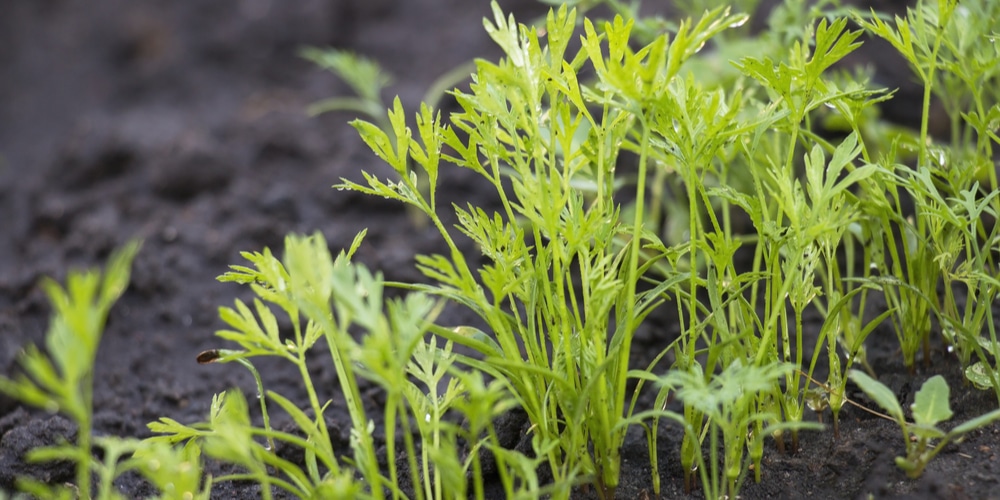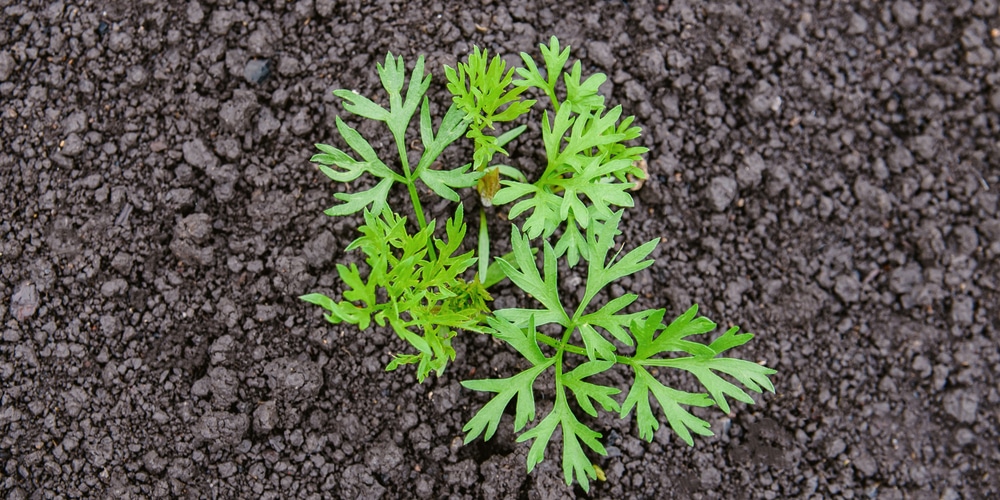Almost nothing compares to seeing masses of vibrant green leaves of baby plants shoot up so willingly. Watching carrot leaves emerging from below the soil surface is encouraging and fulfilling. But should you just sit to watch your carrot leaves grow?
If you have planted carrots and they are already shooting up sprightly, the next thing you need to think about is thinning. Thinning your carrot seedlings is an integral part of growing them. Although it can be a tedious job, it is one of the most rewarding as it helps ensure greater yields.
Without thinning, your carrot leaves will get crowded, start competing for light, moisture, and nutrients, and because they lack adequate space, they will yield stressed, stretched, and potentially mangled carrots or not produce anything.
In this post, you will learn more about growing carrots and why you need to thin the seedlings.
How to thin carrots seedlings
Carrot sprouts are tiny, making it very easy to inadvertently plant them too thickly when sowing. On the other hand, they don’t handle competition well, whether competing with opportunistic or other carrots. That’s why you need to thin them.
Thinning carrots is the technique of removing some seedlings, usually the smaller and weaker, in a row to free up space for the rest to grow to mature size with less competition.
Thankfully, thinning carrot seedlings is very simple, except that it can be taxing and time-consuming.
With carrots’ relatively short growth period, thinning becomes necessary not long after germination when the first leaves appear. Here is how to thin your carrot seedlings:
1. Water the carrots
While it is obvious that you have been watering your carrots, before thinning, you will need to water them well to make the soil fairly damp. Watering carrots seedlings before thinning allows you to pull them out easier while they stay intact.
2. Pull out the smaller and weaker seedlings
Thinning carrots start when the seedlings are about three to four inches tall. To thin, hold the seedling to be removed between your thumb and forefinger at the soil level, then pull to dislodge the entire plant from the soil.
With the first thinning, aim to leave approximately 2 cm to one inch between carrot seedlings.
When it comes to thinning carrot seedlings, it is always advisable to pull out seedlings that look weak, unhealthy, or are growing slowly.
The amount of thinning varies with the variety you have in your garden. Naturally, bulkier varieties need more space than varieties that give out petite carrots
3. Mound more soil around leftover plants
Carrot shoulders tend to turn green and bitter if they are exposed to light as they grow. To prevent discoloration and preserve carrots’ taste, it is a good idea to gently mound soil around the tops of the leftover carrot plants after the initial thinning.
4. Repeat thinning
The second thinning session should come three to four weeks after the initial thinning. Repeat the thin procedure – watering and pulling out weaker and unhealthy carrots – to leave the seedlings one and a half to two inches apart.
Unlike initial thinning, the second thinning rewards you with yummy baby carrots that you can eat as snacks, add to salads, or roast. Second thinning also gives you a sense of what is happening underground.
Note: The smell of fresh uprooted carrots attracts carrot rust flies, so be ready to cover your carrots to keep the flies from laying eggs on them.
Why is thinning carrots important
Apart from deep, well-draining, clump-free soil with plenty of organic matter, carrots need space to grow best and develop fully. Whether you have perfect soil or are growing carrots in raised beds, thinning is a necessary evil.
So, why should you thin your carrot seedlings?
Reduce competition between seedlings: Carrots don’t handle competition well. As such, you don’t want them to get crowded. Crowding causes competition for essential nutrients, light, and moisture. Thinning reduces competition between individual seedlings, allowing the healthy ones to grow to their full potential.
Enhances airflow: Adequate air supply and proper air circulation are key to the success of your carrots. Considering that reduced airflow encourages fungal disease as well as pests, thinning can go a long way to prevent pests and diseases in carrots.
Gives you carrots room to grow and ensures productivity: Through thinning, you do away with unhealthy seedlings, which leaves the healthy ones with the space they need to grow. This helps ensure that the carrots develop optimally so that you will have quality produce.
Do You Need To Thin Carrot Seedlings: Conclusion
While thinning can be tedious, it is extremely important to thin your carrot seedlings for quality produce. Even better, you can transplant the carrot seedlings you pull out to expand your garden.
Related Article: What to do With Carrot Sprouts?


